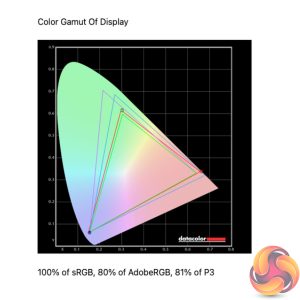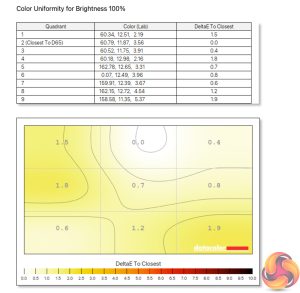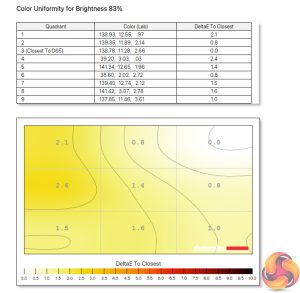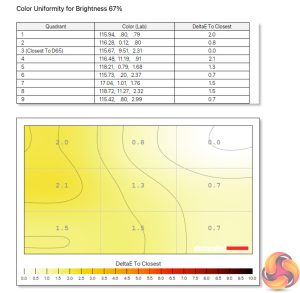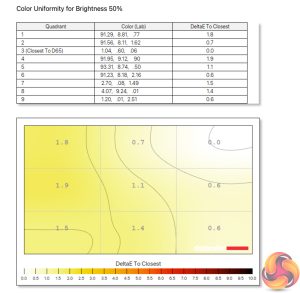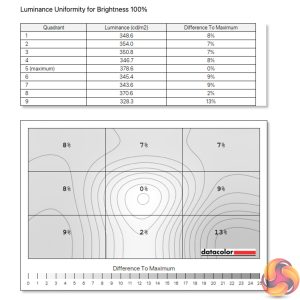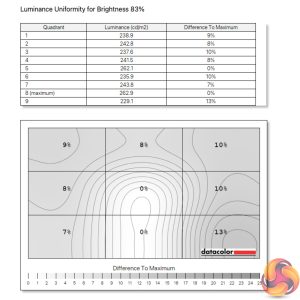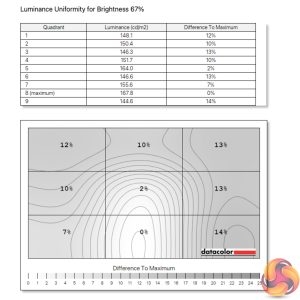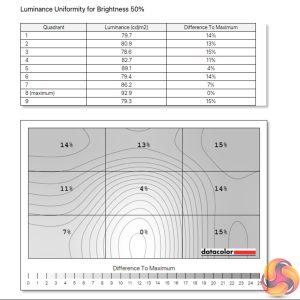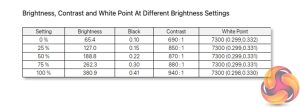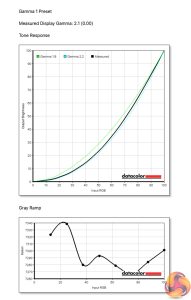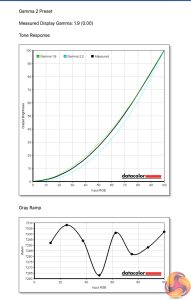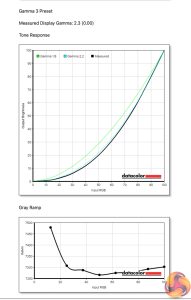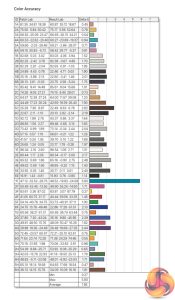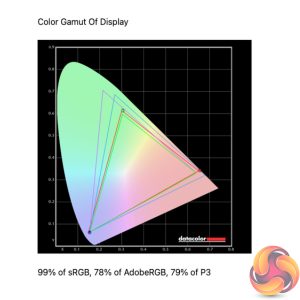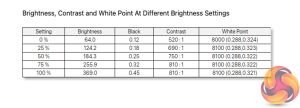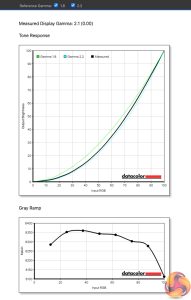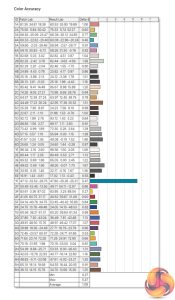Our main test involves using a DataColor SpyderX Colorimeter to assess a display’s image quality. The device sits on top of the screen while the software generates colour tones and patterns, which it compares against predetermined values to work out how accurate the screen is.
The results show –
- A monitor’s maximum brightness in candelas or cd/m2 at various levels set in the OSD.
- A monitor’s contrast ratio at various brightness levels in the OSD.
- The brightness deviation across the panel.
- The black and white points.
- The colour accuracy, expressed as a Delta E ratio, with a result under 3 being fine for normal use, and under 2 being great for colour-accurate design work.
- The exact gamma levels, with a comparison against preset settings in the OSD.
We first run this test with the display in its default, out-of-the-box state, with all settings on default. We then calibrate the screen using the Spyder software and run the test again.
Pre-calibration
Starting off our panel analysis with a look at the gamut, the Q24G2A offers 100% sRGB, 80% AdobeRGB and 81% DCI-P3 coverage. 100% SRGB we'd certainly expect, though the latter two colour spaces are more geared towards professional use – not something we're looking for from a £220 gaming monitor.
Panel uniformity in terms of white balance is pretty good too. Very good, in fact, at 100% brightness, though it gets slightly worse at 83% brightness – though not by a whole lot.
Luminance uniformity is less impressive, but still OK. At 100% brightness the main area of aberrance appears in the bottom right corner, though at 50% brightness there are some more significant variations.
Speaking of brightness, things are about what we'd expect from this sort of IPS LCD display. We measured a peak luminance of 381 nits, while it can go as low as 65 nits. Both are decent, if not class-leading – but again, we have to keep things in the context that this is a £220 display. Likewise for contrast, we measured a peak ratio of 940:1, just shy of the claimed 1000:1 figure. If you want a more contrasty image, a VA panel would be your best bet at this price point.
Three different gamma options are present. Gamma 1 reports back with a gamma 2.1 reading, while Gamma 2 drops down to 1.9. Lastly, Gamma 3 reports at 2.3. All of the presets are evenly spaced out, though none can offer a reading of 2.2.
Out of the box colour accuracy is not bad. We saw an average deltaE of 1.56 which is a solid result for a monitor of this class. One of the blue channels is miles out however, with a deltaE of 5.8, but that's just one wonky result.
Post-calibration
Naturally we also calibrated the display, though for gamers it's not really necessary. Still, overall colour accuracy did improve, with a new average delatE of 1.09, though that pesky blue channel is still quite aberrant, with a deltaE of 5.47.
 KitGuru KitGuru.net – Tech News | Hardware News | Hardware Reviews | IOS | Mobile | Gaming | Graphics Cards
KitGuru KitGuru.net – Tech News | Hardware News | Hardware Reviews | IOS | Mobile | Gaming | Graphics Cards



